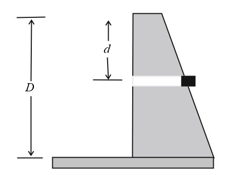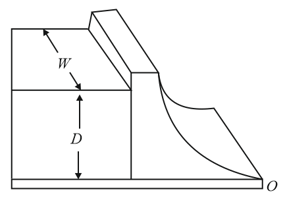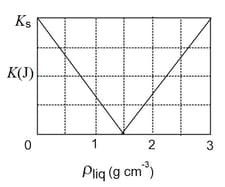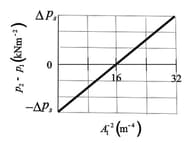Resnick & Halliday Solutions for Chapter: Fluids, Exercise 1: Problems
Resnick & Halliday Physics Solutions for Exercise - Resnick & Halliday Solutions for Chapter: Fluids, Exercise 1: Problems
Attempt the practice questions on Chapter 14: Fluids, Exercise 1: Problems with hints and solutions to strengthen your understanding. Principles Of Physics International Student Version solutions are prepared by Experienced Embibe Experts.
Questions from Resnick & Halliday Solutions for Chapter: Fluids, Exercise 1: Problems with Hints & Solutions
In a giraffe with its head above its heart, and its heart above its feet, the (hydrostatic) gauge pressure in the blood at its heart is . Assume that the giraffe stands upright and the blood density is , in (or ), find the (gauge) blood pressure at the brain (the pressure is enough to perfuse the brain with blood to keep the giraffe from fainting) and at the feet (the pressure must be countered by tight-fitting skin acting like a pressure stocking). If the giraffe were to lower its head to drink from a pond without splaying its legs and moving slowly, what would be the increase in the blood pressure in the brain (such action would probably be lethal)?
In the fresh water behind a reservoir dam has depth . A horizontal pipe in diameter passes through the dam at depth . A plug secures the pipe opening. Find the magnitude of the frictional force between plug and pipe wall. The plug is removed. What water volume exits the pipe in ?

In water stands at depth, behind the vertical upstream face of a dam of width, . Find the net horizontal force on the dam from the gauge pressure of the water and the net torque due to that force about a horizontal line through , parallel to the (long) width of the dam. This torque tends to rotate the dam around that line, which would cause the dam to fail. Find the moment arm of the torque.

The volume of air-space in the passenger compartment of an car is . The volume of the motor and front wheels is , and the volume of the rear wheels, gas tank, and trunk is , water cannot enter these two regions. The car rolls into a lake. At first, no water enters the passenger compartment. How much of the car, in , is below the water surface with the car floating as water slowly enters, the car sinks. How many of water are in the car as it disappears below the water surface? (The car with a heavy load in the trunk, remains horizontal.)

The maximum depth that a diver can snorkel is set by the density of the water and the fact that human lungs can function against a maximum pressure difference (between inside and outside the chest cavity) of . What is the difference in for fresh water and the water of the Dead Sea (the saltiest natural water in the world, with a density of )?( take )
A small solid ball is released from rest while fully submerged in a liquid. Then, its kinetic energy is measured when it has moved in the liquid. Graph gives the results after many liquids are used, the kinetic energy is plotted versus the liquid density and , sets the scale on the vertical axis. What are the density and the volume of the ball?

Fresh water flows horizontally from pipe section of cross-sectional area into pipe section of cross-sectional area . It gives a plot of pressure difference, versus the inverse area squared that would be expected for a volume flow rate to a specific value if the water flow were laminar given all circumstances. The scale on the vertical axis is set by, . For the conditions of the figure, what are the values of (a) and (b) the volume flow rate?
Snorkeling by humans and elephants. When a person snorkels, the lungs are connected directly to the atmosphere through the snorkel tube and thus are at atmospheric pressure. In atmospheres, what is the difference between this internal air pressure and the water pressure against the body if the length of the snorkel tube is (a) (standard situation) and (b) (probably lethal situation)? In the latter, the pressure difference causes blood vessels on the walls of the lungs to rupture, releasing blood into the lungs. As depicted an elephant can safely snorkel through its trunk while swimming with its lungs below the water surface because the membrane around its lungs contains connective tissue that holds and protects the blood vessels, preventing rupturing.


